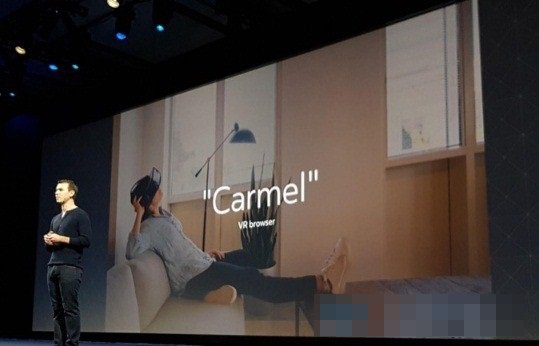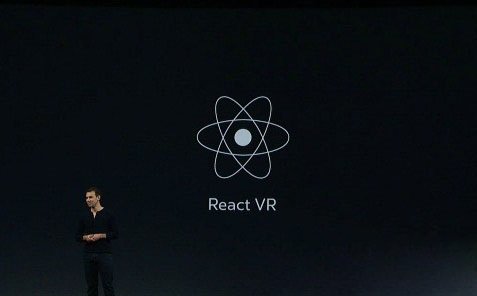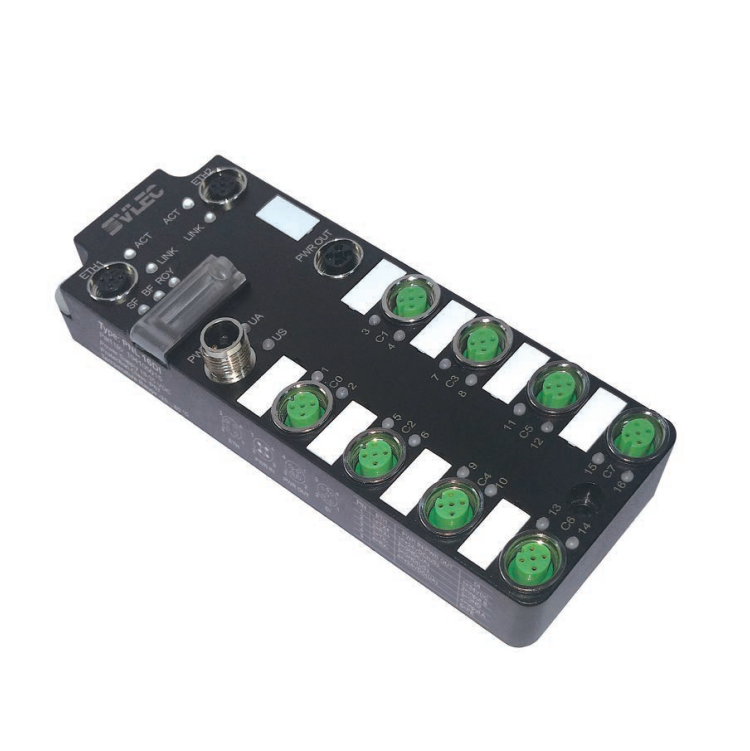When it comes to the virtual reality industry, VR technology and VR content are two topics that cannot be bypassed. In order to effectively promote VR content to ordinary consumers, entrepreneurs and technology giants have tried various methods. WebVR technology is one of them. WebVR moved the VR experience to the browser, allowing users to view VR content through the browser.

Although it is not realistic to move all VR content into the browser, WebVR is still considered as another flash point for VR content and has been favored by many giants, including Google, Samsung, Oculus, Microsoft, and Apple.
Tech giants focus on WebVR
WebVR was first proposed by Mozilla in 2015. It is an experimental JavaScript API that provides API interfaces to VR devices such as Oculus Rift and Google Cardboard. With WebVR's dedicated interface to VR hardware, developers can build comfortable VR experiences.
Recently, Google released a Chrome browser that supports WebVR. When users browse to the WebVR compatible page, they can insert the phone into Daydream View and view the VR content. Unfortunately, Chrome's application on Windows is still experimentally supporting WebVR.

Facebook's Oculus also focuses on WebVR. The company launched the VR browser Carmel and WebVR content development Tool React VR to facilitate developers to create and test WebVR content. At the F8 conference in April this year, we will see the company's further sharing of WebVR.
At present, WebVR is supported by Microsoft Edge browser, Samsung Gear VR browser, Firefox Nightly edition and Others . All of the above companies use the WebVR standard jointly proposed by Google and Mozilla, and they are all members of the W3C WebVR network community. However, at this stage, WebVR is still in the draft stage of W3C, so there are other vendors who have made different voices.

Apple’s WebKit team proposed to set up a GPU on the Web community group at the W3C to discuss the future of web-based 3D graphics and to develop a standard API to fully utilize modern GPU features, including low-threshold graphics processing and general-purpose computing. Obviously, in order to be more suitable for their future VR/AR strategies, Apple wants to develop a WebVR standard that is different from those of Google and other vendors.
Why is WebVR optimistic?
At this stage, WebVR has many technical problems in application development mode, data transmission and interaction, and virtual scene construction methods. But why is the technology giant so optimistic about the future development prospects of WebVR, and even hesitate to launch a "standard battle"? This is because WebVR has cross-platform features and is expected to become a more reasonable content distribution platform.
VR content distribution
When it comes to attracting users into the VR world, the industry's answer is to bring VR content to users through VR helmets and app stores. But with the popularity of WebVR, we will see a new possibility: VR helmets become a tool for viewing content, not a method for users to obtain content. The benefits are also obvious. We can get VR content on websites that we are accustomed to and like, whether it is music, video or images.

Cross-platform features
At this stage, VR ecology is still very fragmented: basically every VR helmet has its own ecology (stores, controllers, etc.), which brings great inconvenience to users. WebVR does a lot of work to achieve cross-platform compatibility. By seeking common ground, WebVR can effectively place helmets and content in the same ecosystem.
While WebVR facilitates user experience, it can also in turn promote VR content producers to achieve a unified standard in terms of technology, format, and so on. For developers, WebVR makes its work popular among a wider range of users including mobile VR (Samsung Gear VR, Google Daydream View), and desktop VR (Windows, Oculus).
Use directness
With the spread of technologies such as the Internet, users are increasingly moving away from downloading files in the day-to-day life, and are more inclined to content that can be easily viewed with one click. WebVR can meet this demand of users well, but it will not replace the application store because some high quality games and long videos still need to be downloaded to get the best experience.
The beauty of WebVR is that it can adapt and use existing technologies, applications, etc. to create more VR content for the Internet world. In fact, more and more applications and browsers supporting WebVR will promote VR to become an emerging industry with sound development and a solid foundation.
How to develop WebVR?
After reading the benefits of WebVR, we will introduce some of the WebVR development methods, hoping to help developers interested in WebVR find a suitable method and ideas.
A-Frame
A-Frame is a development tool launched by the MozVR team from Mozilla. Its developed VR scene is compatible with HTC Vive, Oculus Rift, smartphone and PC. The official introduction shows that A-Frame is an open source WebVR framework for creating VR experience through HTML. Its advantages are reduced redundant code, structured code, and designed specifically for Web developers.

Mozilla recently released the v0.5.0 version of the tool, which brought improvements to the glTF model, bug fixes, and more. Mozilla has previously released an open source project on GitHub. Interested developers can learn more about A-Frame through these projects to create VR content satisfying themselves and their users.
React VR
React VR is a WebVR development tool launched by Facebook's Oculus. React VR combines React with the underlying WebVR and WebGL APIs to build a series of toolkits that allow developers to develop WebVR applications using tags. Not only that, Oculus also released it to the GitHub open source platform for more user feedback.

Oculus has also brought Carmel-Starter-Kit, its VR browser starter kit demonstration, to GitHub, where developers can learn how to create content that can be used by helmets, as well as HTML5, browser-wide panoramic content, and more. In April this year, F8 will also reveal more React VR development content.
Google WebVR
Google Chrome supports WebVR API and GamePad API extensions, allowing developers to develop WebVR content. With the WebVR API, developers can control the input and output of VR helmet devices, while the GamePad API extensions provide control over motion controller inputs.

If developers are interested in WebVR development in Chrome, then first need to install WebVR Emulation Chrome DevTools Extension, and need to know about three.js. Not only that, the development process will also involve WebGL, Web Audio and other interfaces. Google has provided resources such as VRView, WebVR Boilerplate, WebVR Polyfill, and Ray-Input on GitHub to facilitate developers to quickly begin the development of WebVR.
As a technology that allows "developers to create a rich and immersive immersive experience for a variety of devices," WebVR undoubtedly has a good development prospects. At this stage, WebVR is not yet mature. At the moment when giants are focusing on WebVR and drafting WebVR standards, developers may use it as one of the options for entering the VR industry.
The remote Bus Module with strong anti-interference ability can adapt to any harsh electrical and difficult environment. Profinet EtherNet/IP, Ethercat, Profibus, DeviceNet, CC-Link I/O Link series protocol available .

I/O System,Remote Module,IP20 Remote I/O Module, Bus Module , Distribution box,Pfofibus Module , EtherCat Module , EtherNet IP Module
Kunshan SVL Electric Co.,Ltd , https://www.svlelectric.com